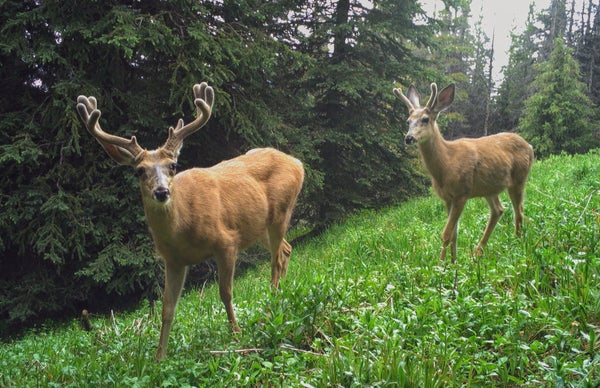How Wild Animals Actually Responded to Our COVID Lockdowns
The COVID lockdowns and the subsequent reemergence of humans had some surprising effects on wildlife beyond “nature is healing” tropes
A pair of male mule deer camera trapped in Cathedral Provincial Park, British Columbia, Canada.
Cole Burton/UBC WildCo
When the COVID pandemic hit British Columbia in spring 2020, Golden Ears Provincial Park closed its doors to visitors. No longer could hikers explore its hemlock forests or canoe in its lakes, but at least some of the park’s wildlife seemed to appreciate the situation.
During the closure, a camera trap network run by University of British Columbia researchers recorded a significant uptick in mountain lions. In a common, often half-joking cliché of the time, it seemed to many people that nature was “healing.”
“It’s a romantic idea,” says Cole Burton, a conservation biologist and wildlife ecologist at the University of British Columbia and co-author of the study. But, he adds, it’s ultimately flawed. The reality is likely much more complicated: While humans were indoors, he notes, the cameras spotted fewer deer. When lockdowns ended and visitors returned, mountain lion recordings dipped again, and deer recordings picked up. But at the Canadian province’s more remote Pacific Rim National Park Reserve, a network of camera traps found that black-tailed deer abundance declined when people streamed back in.
On supporting science journalism
If you’re enjoying this article, consider supporting our award-winning journalism by subscribing. By purchasing a subscription you are helping to ensure the future of impactful stories about the discoveries and ideas shaping our world today.
Such are the contradictory-seeming results Burton and his colleagues found themselves sorting through as they used the pandemic’s unique circumstances to try teasing apart some complexities of wildlife responses to humans. Localized results such as…
Read the full article here







